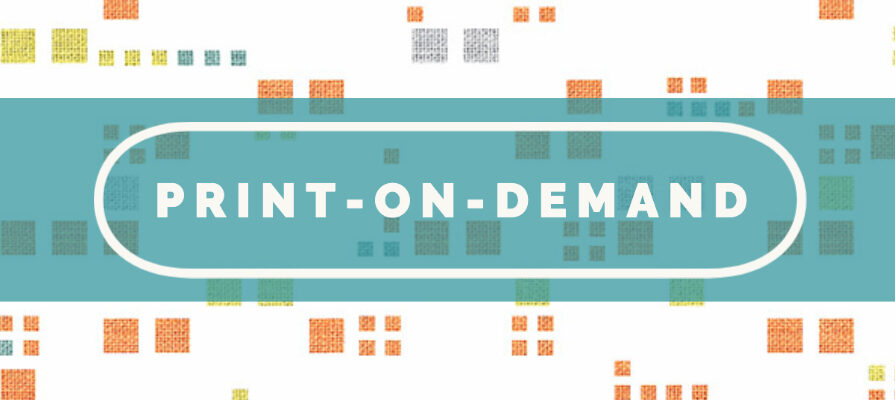
Print-on-Demand Terms to Know
The world of print-on-demand technology is an exciting corner of the world to hang out in, and it’s growing exponentially. As technology improves, the opportunities to use this technology have been opening up. Yet, it can also be a little intimidating to enter and confusing if you’re not up on what all the terminology means. We put together a handy list for you of a few of the basics terms to get you started.
Substrate
Substrates are the base material that is being printed on, such as paper, canvas, fabric, film or glass. There are many different kinds of substrates out there and they differ widely depending on what you are printing. In the world of digital printing on textiles, substates vary by fiber type and fabric construction and are dependent on what the end-use will be. The type of substrate used will dictate the type of ink and dye used. For example, the type of ink best suited for polyester will not be the best option for wool.
Resolution
One of the advantages of digital printing is the ability to print more detailed and finely drawn designs because these printers have a very high resolution. Traditional printing methods were limited by the screens and rollers used to print. Those screens had physical holes through which dye flowed. If you had more holes, that was higher resolution than if you have fewer. In digital printing, there are no screens, rollers, or any holes. The dye is sprayed right onto the fabric. This means you can have fine designs and not lose any detail.
Repeat
Repeat refers to the design that is repeating across the substrate. Historically, repeat sizes were predetermined by the equipment being used. Digital printing has freed designers from strict repeats. The equipment limitations have been removed and now you are mostly limited by the size of what you’re printing. Textile designers are skilled at designing patterns in repeat accurately and seamlessly in a variety of repeat styles.
Strike Off
A strike off is a term designers and printers use to describe the first sample of fabric printed according to production specifications. A printer usually has a designer approve a strike off before beginning production printing. This is the time that any adjustments would be made to assure all details are correct.
Dye Sublimation
Dye Sublimation is a type of printing where the chemistry does the work. Dye-sub inks are printed on a transfer paper. The design on that paper is then transferred to fabric using heat. Heat causes the ink to change from a solid to a gas and then bond with the polyester fiber. This bond means that the color becomes part of the fiber itself and is not sitting on the top of the fabric. This can be a great choice when printing fabrics for use in commercial or residential interiors as they generally get a lot of use.
Do you have questions about print-on-demand technology? Let us know in the comments and we’ll direct you to the answers. You can also check out two of our favorite online resources. First, the blog at ITNH, Inc. and also the blog at SPG Prints.
Share this post
Author
DESIGN/COLOR TRENDS AND AWESOME INFORMATION IN YOUR INBOX
Sign up for our monthly trend letter




